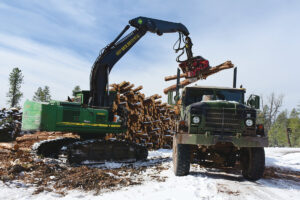
Basically, this would seem like good news for those concerned with birds and wildlife habitat; however, land surveys reveal that the average size of these woodlots—as the forested areas are called—has shrunk from about 24 acres to 18 acres. As people move away from cities and extend the bounds of exurbia, woodlot owners have been shaving off a few acres here and there for new homes and development. As a result they have been reaping good prices and profiting from their land.
Scientists refer to this process as fragmentation, which is not beneficial to most wildlife. More roads and traffic, more driveways and lights, more expanses of green lawn—these are not conducive to most wildlife. While acknowledging the rights of the property owners, Audubon suggests that managing the land so that it can be logged would be an alternative to selling it off . The logging would provide a steady, long-term income stream, although admittedly not the immediate flush of money that comes from a land sale.
More and more frequently landowners report answering the doorbell to find an eager urbanite asking if any lots are available; or just as likely an independent logger wanting to contract to cut their trees, giving them a good chunk of change. The organization generally opposes both these alternatives. In most cases it would oppose land sales and also warns that some logging practices are harmful. And the practice of high grading still exists. Not to paint all loggers with the same brush, this occurs when a logger takes all of the most profitable trees and leaves behind those that are commercially worthless or too small to be saleable for many years to come. It is both unattractive and not ecologically sound management.
Instead, the example cited in the magazine is of an owner who consulted with a professional forester. In this way, he found out what trees should be cut when, and also what other treatments of the forest might actually benefit the wildlife and the vegetation. Some open areas would allow forage to grow and also certain new seedlings to sprout. Dead trees can provide home for a variety of animals and enrich the soil as they decay. Certain brush and bushes also provide food and habitat. What is best for the land could be unique to each site depending on what is currently living there and how adjoining land is put to use.
According to Audubon, owners can log their land and provide both high-quality wildlife habitat as well as income without having to sell off or subdivide the land.
 Audubon magazine
Audubon magazine

